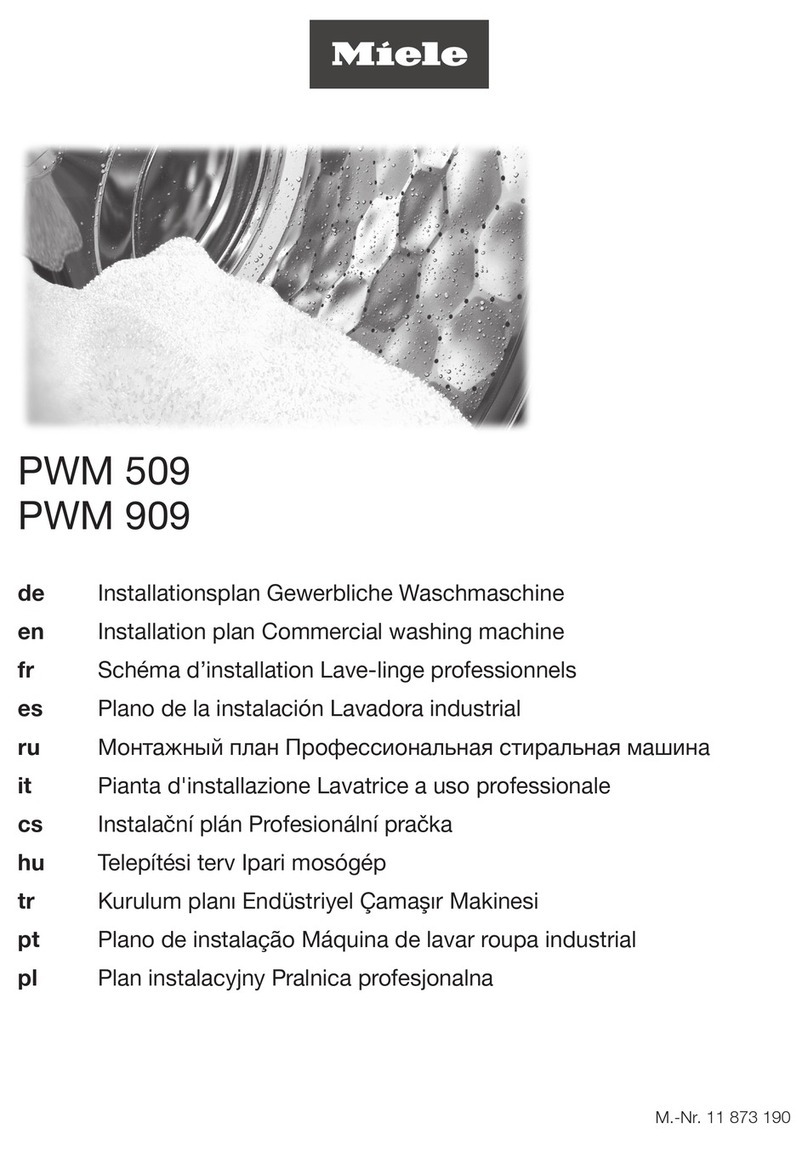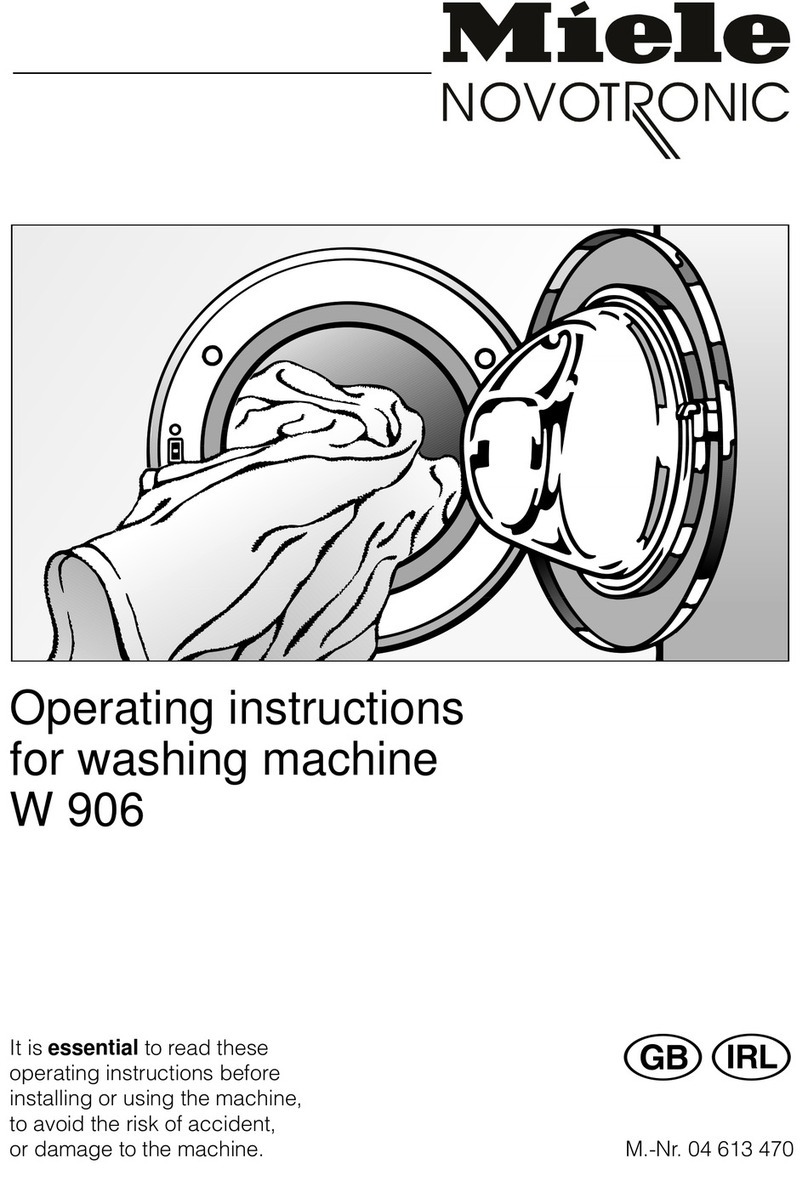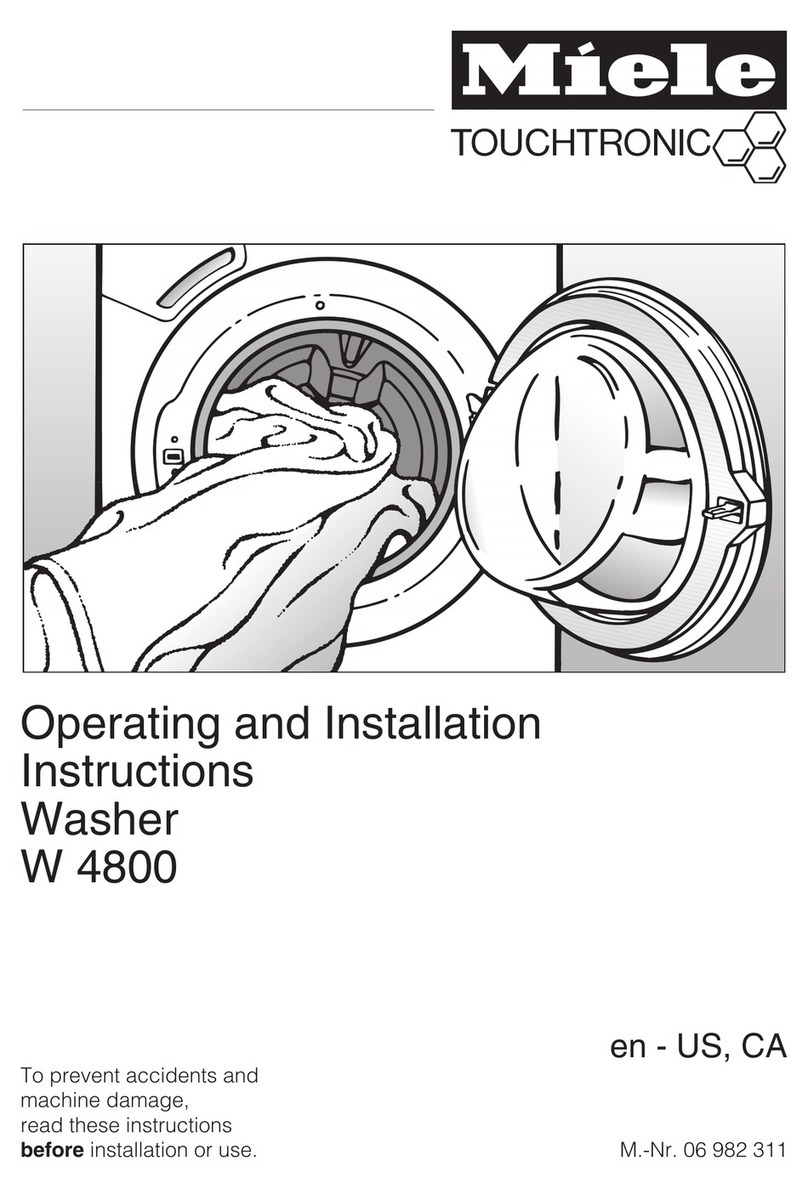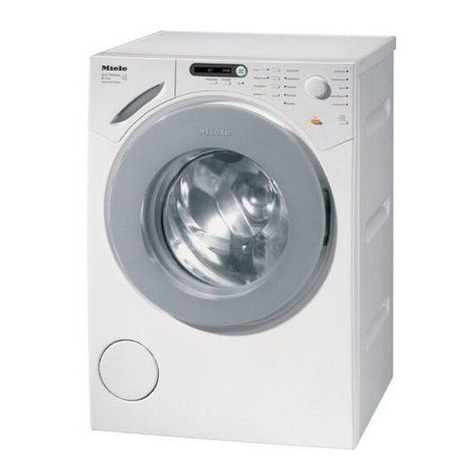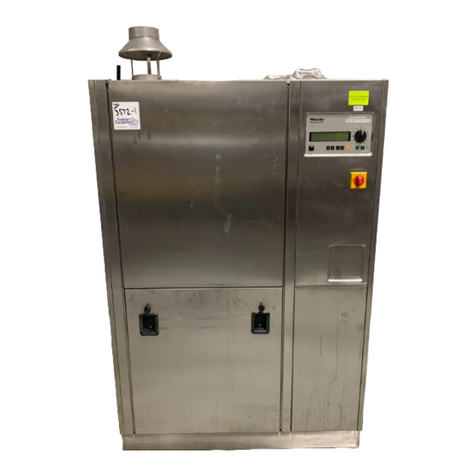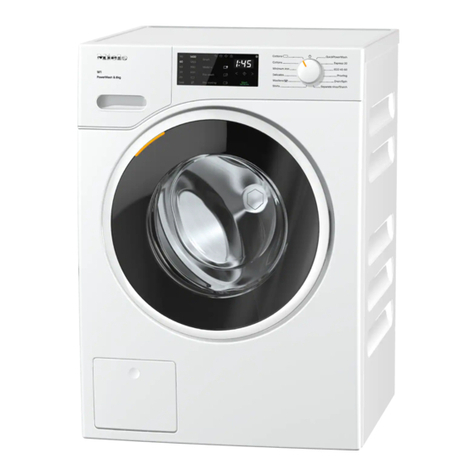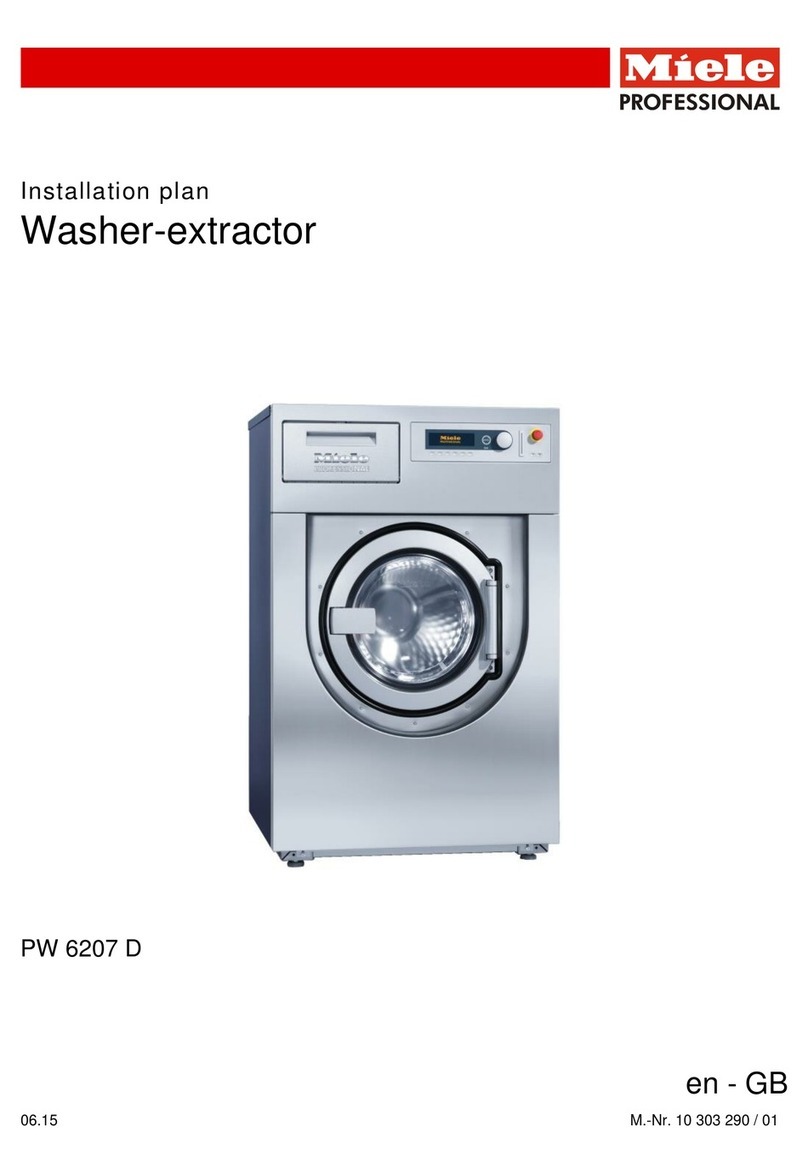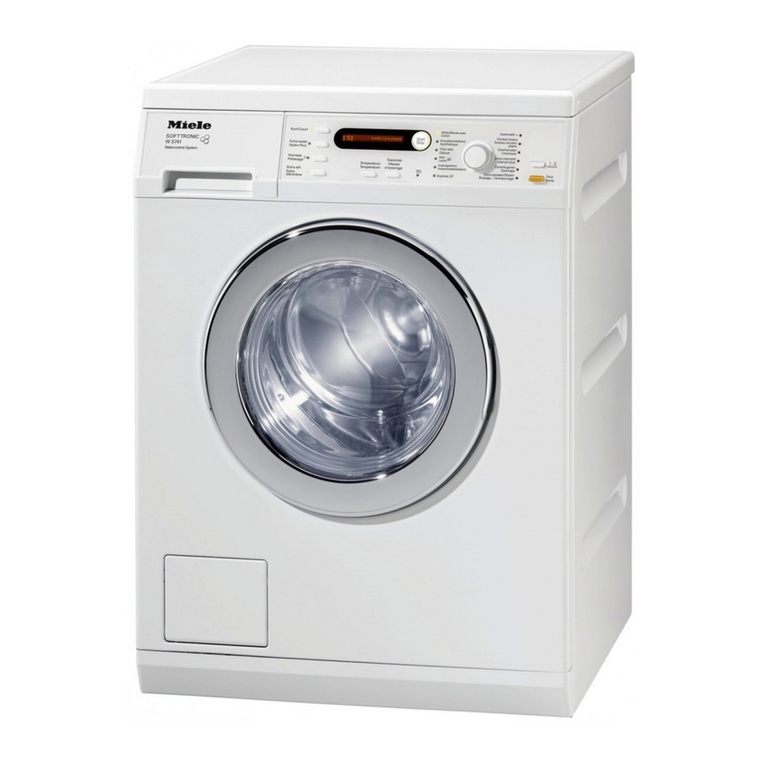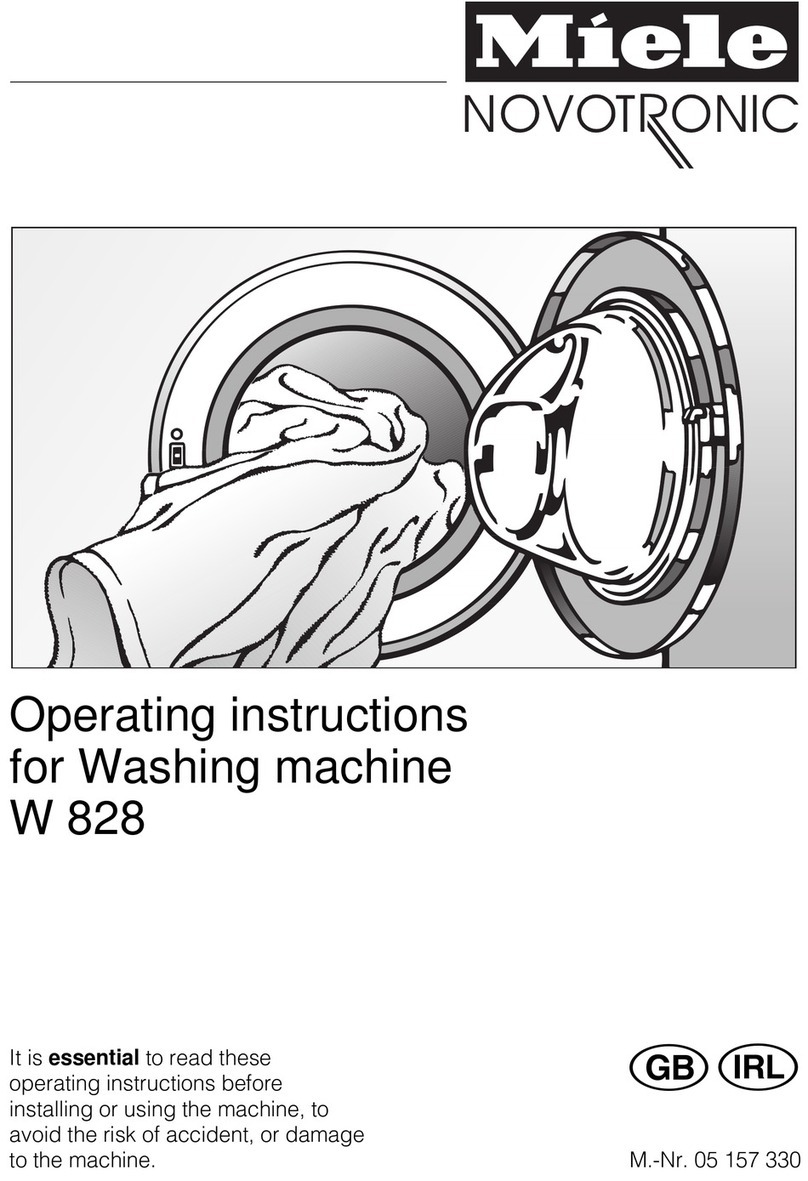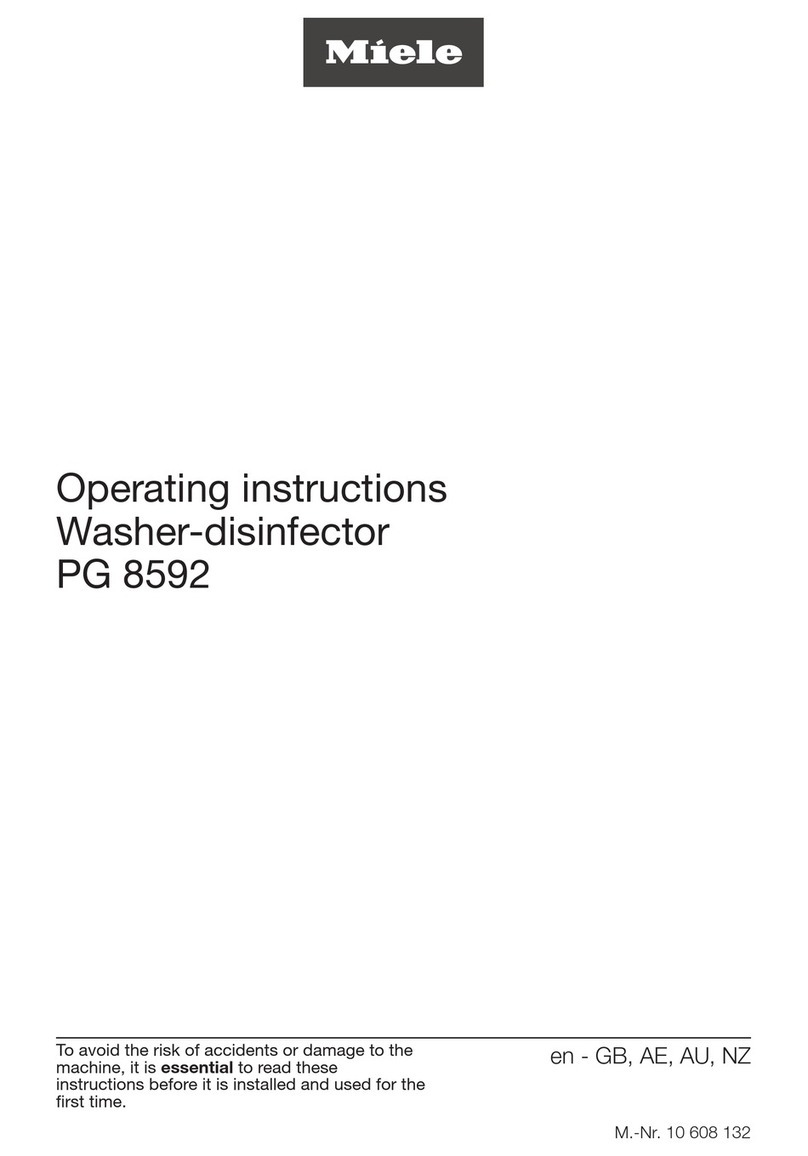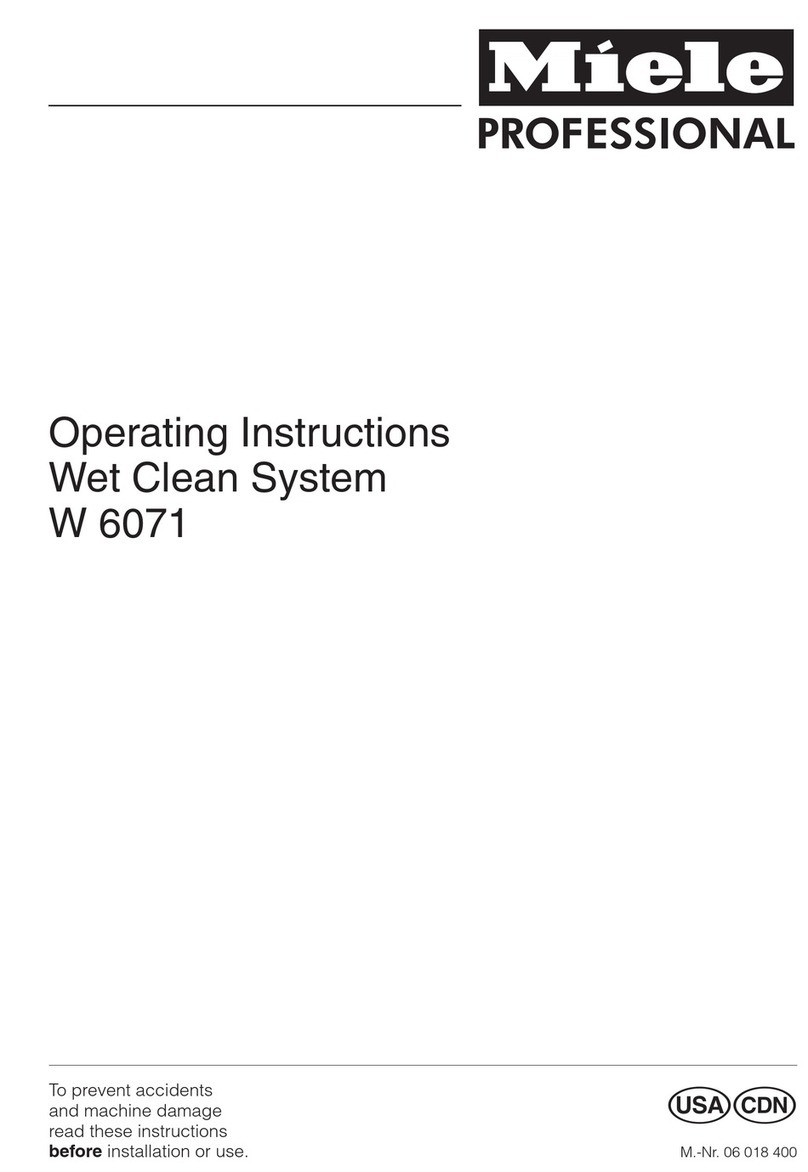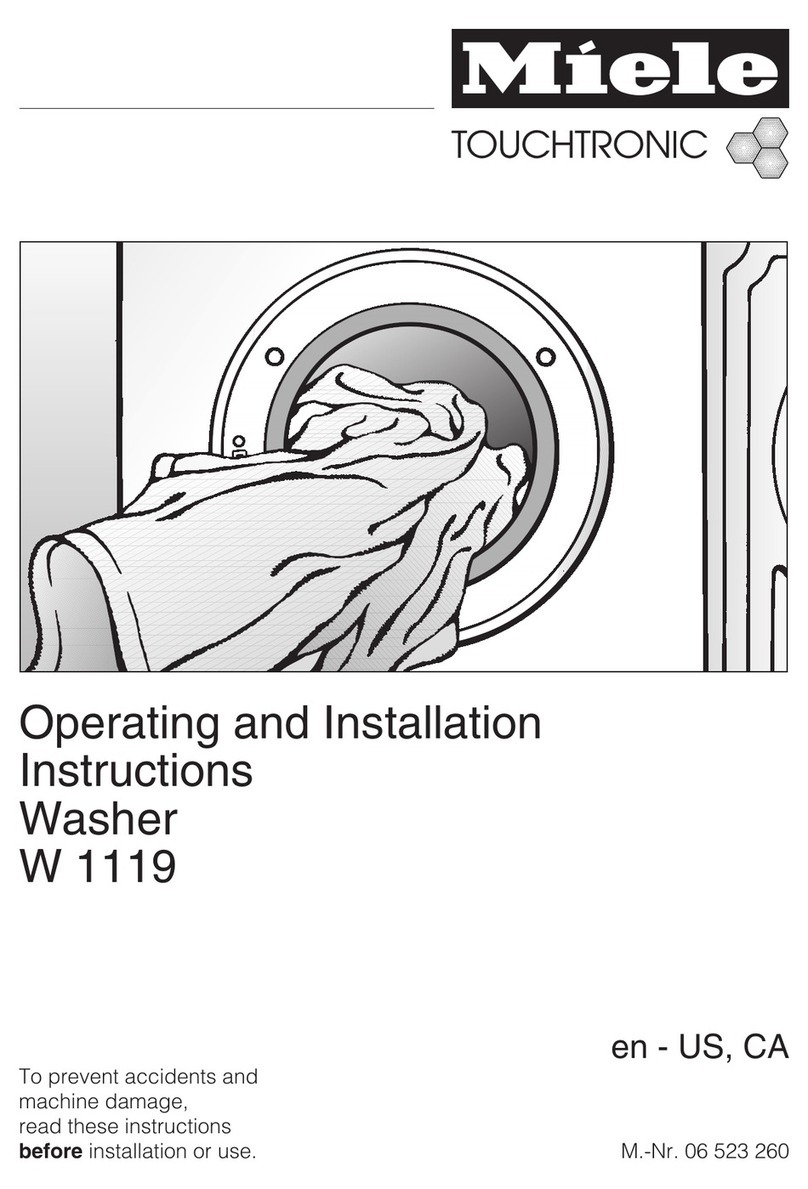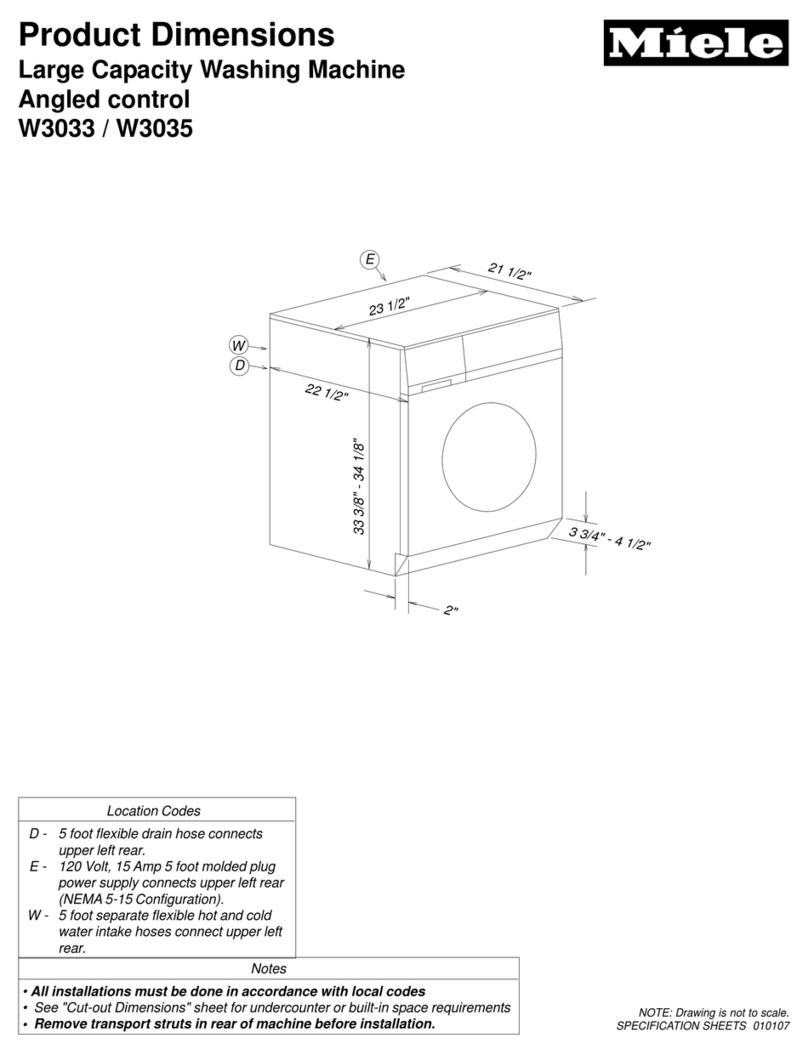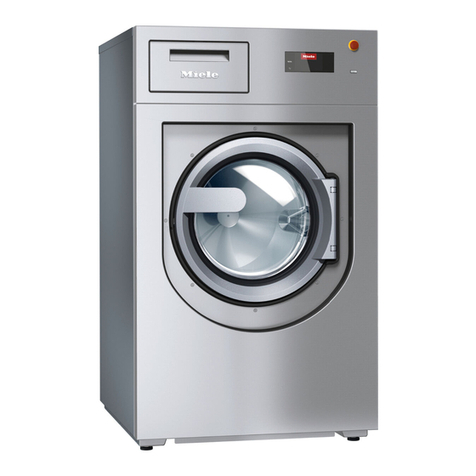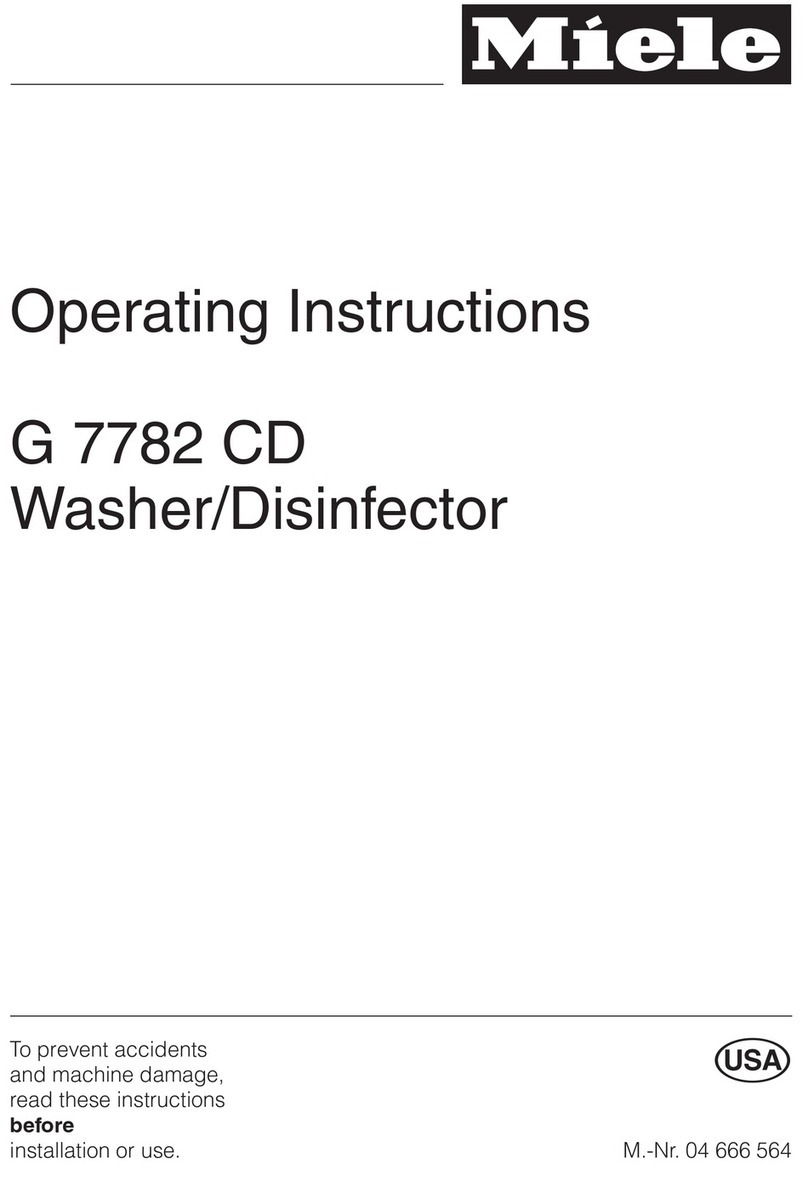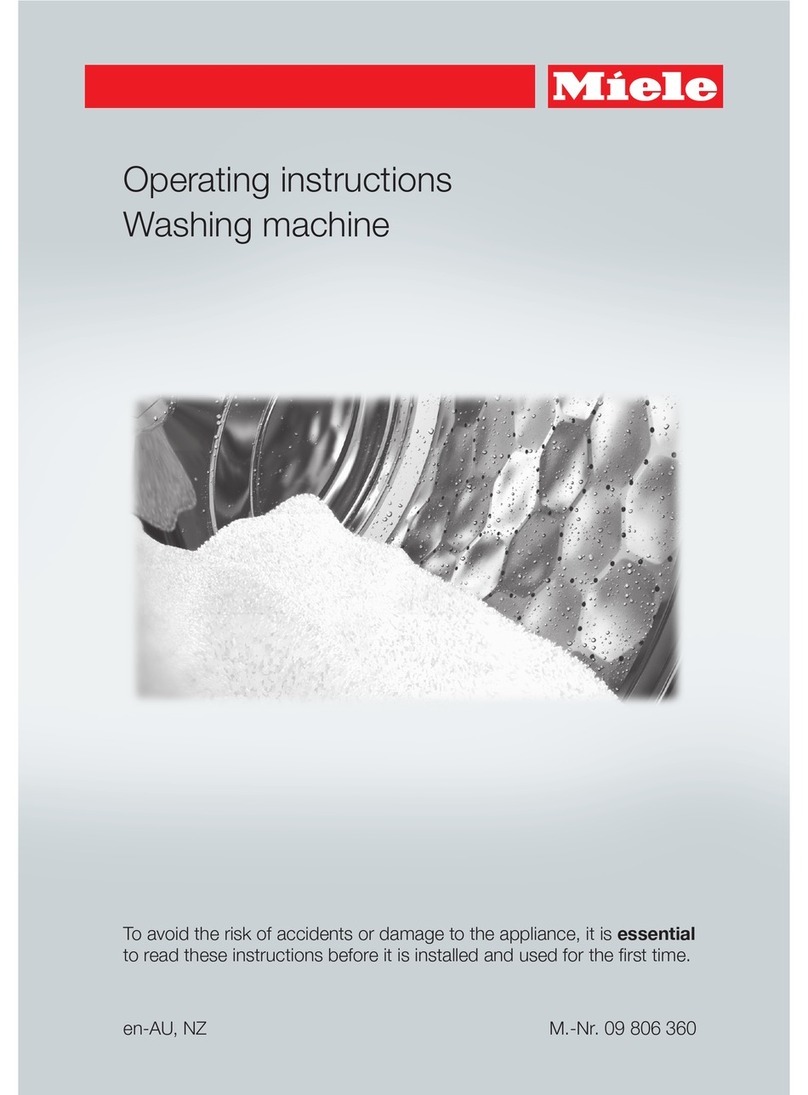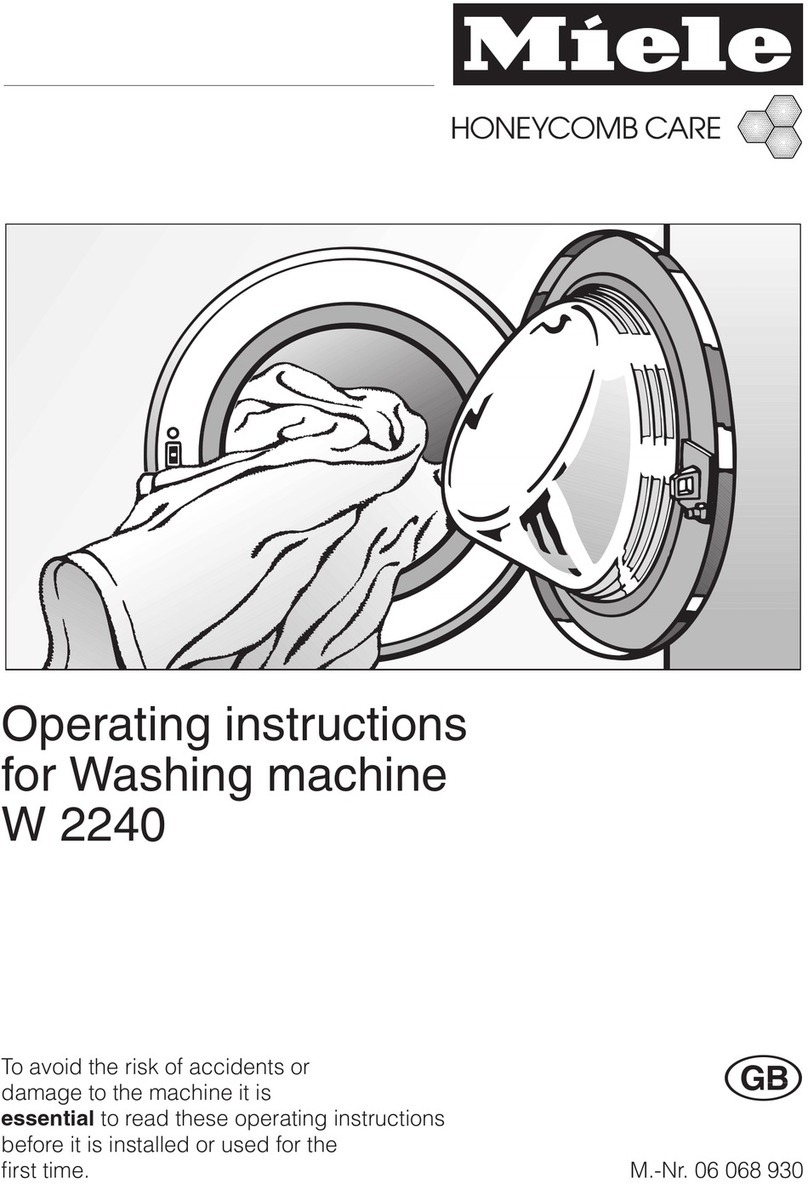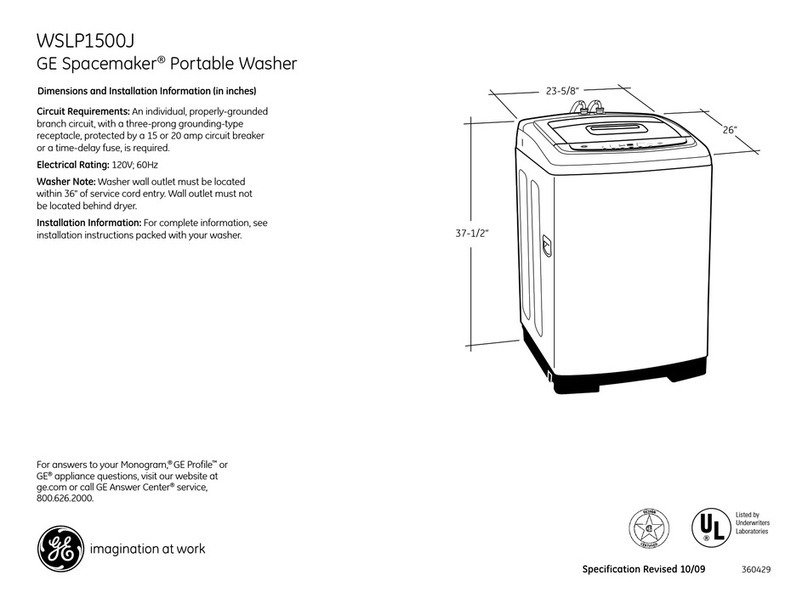When running a disinfecting
programme in accordance with offi-
cial regulations on the control of epidem-
ics, the programme must not be inter-
rupted once it has been started (see "Can-
celling a programme" in an emergency).
The standard of disinfection in the
disinfection programmes must be
routinely confirmed by the user. The
process should be regularly monitored
using chemical indicators, and bacteri-
ologically at intervals using bio-indica-
tors, with full documentation.
Disinfection programmes must not
be interrupted, as this can have a
limiting effect on the disinfection result.
However, should this be necessary, the
complete programme must be re-
peated.
For thermal disinfection, use tem-
peratures and operating parameters
to achieve the required infection prophy-
laxis in accordance with current health
and safety regulations.
Thermal disinfection should be
used in preference to chemo-ther-
mal disinfection. Adequate cleaning re-
sults are essential in order to achieve
satisfactory disinfection results.
The "CHEM" and "combiCHEM"
programmes which need the addi-
tion of a chemical disinfection agent are
not recognised by IfSG and should only
be used if the items being cleaned and
disinfected cannot withstand high tem-
peratures. The range of effective disin-
fection is based on claims made by the
producer of the disinfecting agent.
Their instructions on handling, use and
effectiveness much be observed. The
use of chemo thermal disinfection pro-
cedures is the responsibility of the op-
erator. The standard of disinfection
must be routinely checked.
Only use Miele approved cleaning
agents formulated for use in
washer disinfectors in this machine.
Using unsuitable cleaning agents could
adversely affect items being cleaned as
well as the components of the machine.
Pre-treatments with cleaning or dis-
infecting agents can create foam,
as can certain types of soiling and rins-
ing agents. Foam can have an adverse
effect on the disinfection and cleaning
process.
Where a chemical additive is rec-
ommended on technical applica-
tion grounds (e.g. a cleaning agent),
this does not imply that the manufac-
turer of the machine takes responsibility
for the effect of the chemical on the
items being cleaned.
Please be aware that changes in formu-
lation, storage conditions etc. which
may not be publicised by the chemical
manufacturer, can have a negative ef-
fect on the cleaning result.
When using cleaning agents and
specialised products it is essential
that the manufacturer’s instructions are
followed. Chemicals must only be used
for the purpose they are designed for
and in the situation specified, to the ex-
clusion of other chemicals, to avoid
such dangers as chemical reactions
and material damage.
Warning and Safety instructions
9
